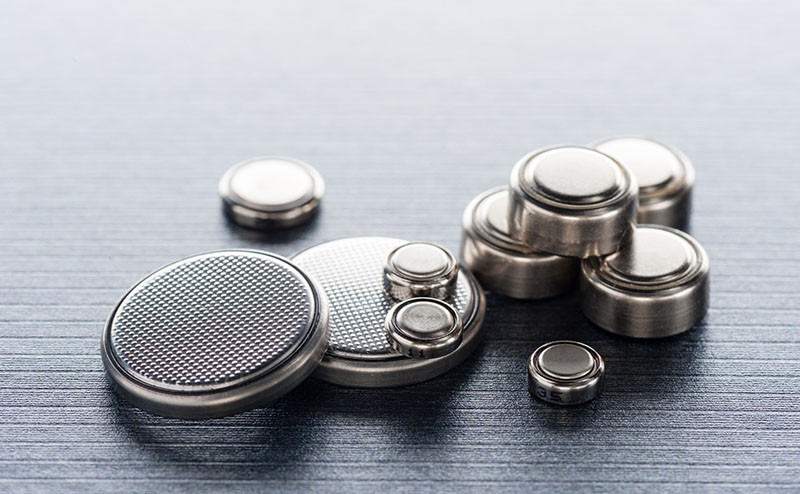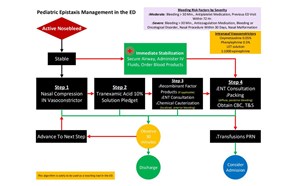
Button Battery Ingestions: Small Object, Big Danger
Kendall Sage Luyt, MD, FAAP
Assistant Clinical Professor, Associate Program Director, Oklahoma Children’s Hospital, The University of Oklahoma Health Sciences Center
Why This Matters
Button battery ingestions are pediatric emergencies with the potential to cause devastating injuries. Between 2000 and 2020, more than 70,000 cases were reported to U.S. poison centers. Injuries have increased over fivefold, in large part due to widespread lithium coin batteries (≥ 20 mm), which are more powerful and more likely to lodge in young children’s esophagus. When lodged in tissue, these batteries generate hydroxide ions via an external current, causing alkaline burns resulting in caustic injury and liquefactive necrosis within as little as 2 hours. Unlike many other foreign bodies, the damage can progress even after removal—making early identification and rapid intervention critical.
Recognizing the Red Flags
One of the greatest challenges in diagnosing button battery ingestion is the frequent lack of a clear history. Nearly half of all ingestions are unwitnessed, and the initial symptoms can be vague or easily attributed to more benign illnesses. A high index of suspicion is essential, particularly in toddlers < 5-year-old who present with nonspecific symptoms and have known access to small electronics.
Clinical signs may include:
- Drooling
- Vomiting
- Dysphagia
- Chest discomfort
- Stridor or respiratory distress
- Refusal to eat
Imaging: Do not Guess—X-Ray
When ingestion is suspected, obtain two-view radiographs of the neck, chest, and abdomen. The classic radiologic findings include the “double halo” or “step-off” sign on the frontal view and a “beveled edge” on the lateral view. These features distinguish button batteries from coins, which are commonly confused radiographically. However, when in doubt, clinicians should err on the side of caution and manage the object as a battery until proven otherwise.
Acute Management: Location Matters
If the battery is in the esophagus:
- Emergent endoscopic removal is necessary, ideally within two hours of ingestion, regardless of NPO status.
- Immediate consultation with pediatric gastrointestinal (GI), ear, nose, and throat (ENT), or surgery is appropriate.
- After removal, admit the child for observation, as tissue damage may continue post-extraction and can result in complications such as perforation, fistula, or stricture.
If the battery has passed into the stomach or beyond:
- In asymptomatic children > 5 years old who ingested a single battery < 20 mm in size, outpatient monitoring with stool checks may be appropriate.
- If the battery is ≥ 20 mm, the child is < 5 years old, the ingestion is symptomatic, or multiple batteries were ingested, endoscopic evaluation should be considered.
- If the battery has not passed within 4 days, repeat imaging is warranted.
- GI consultation is necessary if there is evidence of retention or gastrointestinal injury.
Honey and Sucralfate Era: What’s New
Based on recommendations from the National Capital Poison Center and endorsed by the American Academy of Pediatrics (AAP), there is emerging evidence supporting the use of honey and sucralfate in early ingestion (within 12 hours) as adjuncts to reduce tissue injury. These agents coat the mucosa and help neutralize alkaline injury but should never delay or replace urgent endoscopic removal.
- For children 12 months and older, honey may be administered at home prior to arrival: 10 mL every 10 minutes, up to 6 doses.
- In the hospital, sucralfate can be given in doses of 1 g every 10 minutes, up to 3 doses before removal.
Post-Removal Surveillance
The danger does not end once the battery is extracted. Residual hydroxide and deep tissue injury can continue to cause damage, sometimes leading to delayed complications, such as strictures, tracheoesophageal or aortoesophageal fistulas, and vocal cord paralysis. Caregivers should be counseled to check delayed symptoms, such as fever, hematemesis, chest pain, persistent cough, or irritability. Any concerning symptoms call for immediate re-evaluation.
High-risk cases, especially those involving prolonged impaction or visible mucosal injury, may require:
- Repeat endoscopy
- Cross-sectional imaging (eg, CT) to rule out complications
- Contrast esophagram prior to resuming oral intake
Prevention
Education is key for management and prevention of button battery ingestion. Many families are unaware that button batteries are hidden in common household items and that battery compartments can be easily opened by young children. Encourage the use of battery-secured products and safe storage practices. Resources such Poison Control Center offer excellent caregiver-facing educational materials.
References
- Anfang RR, Jatana KR, Linn RL, et al. pH-neutralizing esophageal irrigations as a novel mitigation strategy for button battery injury. Laryngoscope. 2019;129(1):49–57.
- Jatana KR, Rhoades K, Milkovich S, Jacobs I. Basic mechanism of button battery ingestion injuries and early management. Int J Pediatr Otorhinolaryngol. 2013;77(9):1392–1399.
- Mubarak A, Benninga MA, Broekaert I, et al. Diagnosis, management, and prevention of button battery ingestion in childhood: ESPGHAN position paper. J Pediatr Gastroenterol Nutr. 2021;73(1):129–136.
- Kramer RE, Lerner DG, Lin T, et al. Management of ingested foreign bodies in children: NASPGHAN clinical report. J Pediatr Gastroenterol Nutr. 2015;60(4):562–574.
- Philteos J, James AL, Propst EJ, et al. Airway complications resulting from pediatric esophageal button battery impaction: systematic review. JAMA Otolaryngol Head Neck Surg. 2022;148(7):677–683.
- Scalise PN, Durgin JM, Staffa SJ, et al. Pediatric button battery ingestion: single-center experience and risk score to predict severe outcomes. J Pediatr Surg. 2023;58(4):613–618.




